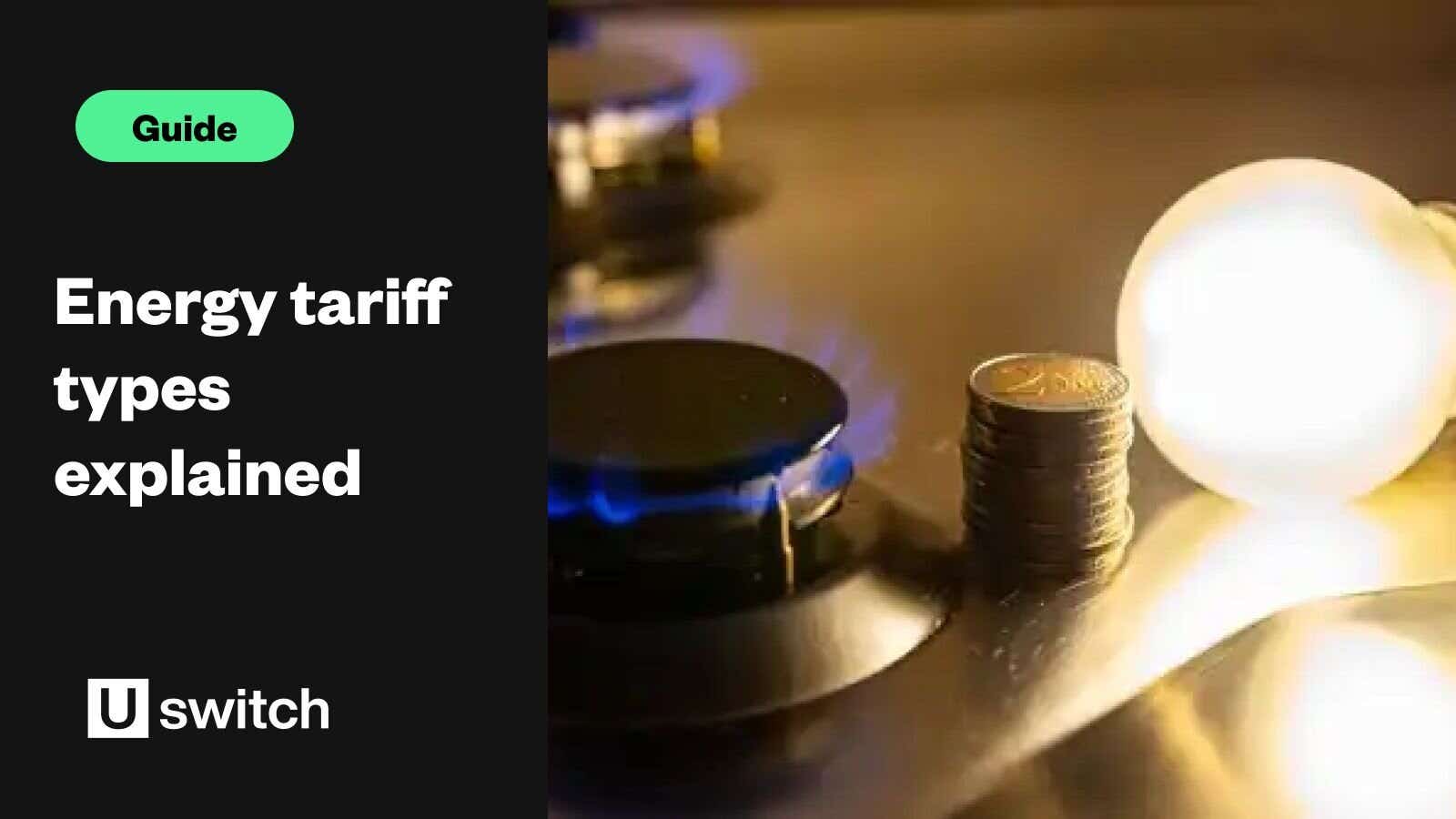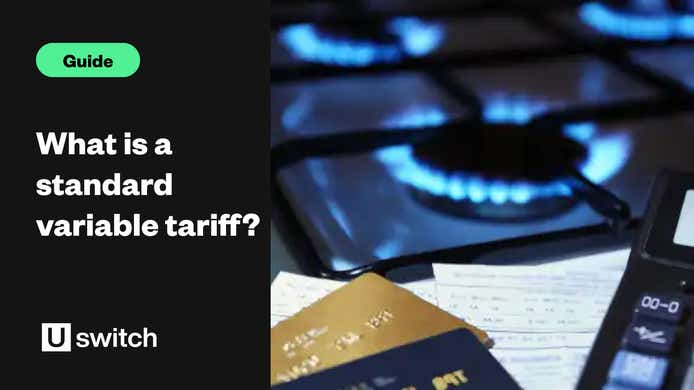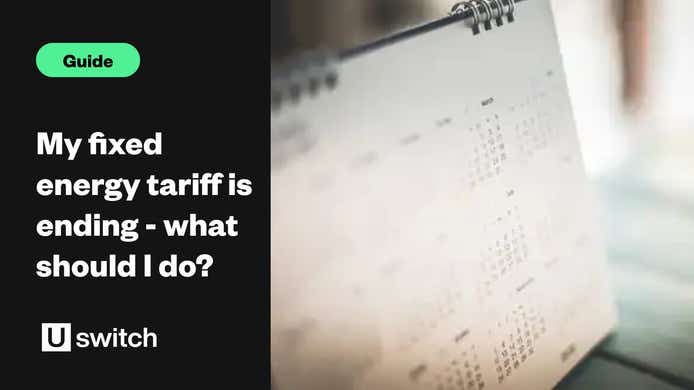Standard variable tariffs (SVTS)
Standard variable tariffs (SVTs) act as an energy supplier's default tariff, and are usually the most expensive types of tariff on the market. When you roll off a fixed price energy tariff, you could end up paying hundreds of pounds more if you don't switch again; this is because you may get placed onto your supplier's SVT. Alternatively, if you've just moved home, this will be the type of tariff you start on with the property's current supplier.
As SVTs are variable, it means the unit rates of your gas and electricity can go up and down as your energy supplier dictates — though you'll have to be given notice of this happening. They are the type of energy tariff that are affected by price rises and the energy price cap, the level of which changes every three months.
Fixed price energy tariffs
Fixed price energy tariffs (also referred to as fixed rate plans) are a type of gas and electricity tariff that provide a set rate per kilowatt hour for a fixed duration — this is usually 12 months, but can be as long as three years. As the rate per kWh is set for the length of the contract, you would be protected from price rises on one of these tariffs. However, if the price of energy fell, you wouldn't benefit from a cut.
It's worth noting that this type of tariff does not protect you from your direct debit amount increasing or decreasing (your direct debit amount is determined by your usage), but it does fix the rate you pay per unit of gas or electricity. Fixed tariffs are usually the cheapest type of tariff available on the market, and make up the majority of competitive deals to be had from switching energy.
Tracker tariffs
Tracker tariffs are increasingly being offered by energy suppliers. Tracker tariff costs usually follow wholesale energy prices. As the market changes, the amount that customers are charged for their energy use changes. This means energy costs can change on a daily basis.
However, while unit rates can change, standing charges usually stay fixed for a set period (usually 12 months). This means a tracker tariff is usually a cross between a variable tariff and a fixed tariff.
This makes it difficult to know whether or not signing up to a tracker tariff will save you money. Although price drops will be passed on to you more quickly, you won't be protected from price rises. It's always worth running an energy comparison to check.
Dual fuel energy tariffs
Many suppliers offer the same tariff to switch both your gas and electricity to, so you wouldn't have to switch each fuel separately, and both your fuels are with the same supplier. For ease, many consumers choose a dual fuel tariff option, as it is convenient to only deal with one energy supplier. This also means there is only one point of contact for any issues with your usage, meters, and billing. Some suppliers offer a discount for having both your fuels with them so it can work out cheaper to be on a dual fuel tariff, however in some cases it can also be cheaper to have each fuel with a different supplier, depending on the deals available to you.
Economy 7 (time-of-use) energy tariffs
Economy 7 is a type of electricity meter and subsequent tariff which has a different prices per kWh for two times of the day (usually day and night). The price per kWh is often cheaper at night, when it's presumed there will generally be less usage from other homes.
If you're not sure whether you have an Economy 7 meter, then one easy way to find out is by looking on your bill. You will be shown two different rates for electricity and the Meter Point Access Number (MPAN) on your bill will start with '02' if you have Economy 7. You may inherit an Economy 7 meter when you purchase a property, but it may not suit your needs if you can't get the most out of the night time's cheaper usage. In this case, you can talk to your current supplier and arrange for a credit meter to be installed (this may cost a fee).
When running a comparison with an Economy 7 meter, it is important that you select this type of meter for your results as this will change what is available to you. It's also useful to know what proportion of energy you use at different rates, as this will make for a more accurate comparison.
Economy 10 energy tariffs
Economy 10 tariffs are similar to Economy 7 in the sense that they depend on the time of usage. However, many suppliers do not support Economy 10, or may not offer tariffs to new customers. Uswitch doesn't support Economy 10 switching - you should directly go to suppliers to see which tariffs are available to you.
Green tariffs
Green tariffs usually promise 100% renewably sourced electricity as a minimum. However, some provide much more, including 10% renewably sourced gas.
With green tariffs, the supplier buys the same amount of electricity and gas that you use; your energy usage adds to the demand for renewably sourced energy. Green tariffs are now some of the cheapest in the market, following a drop in the cost of producing renewable energy.
Prepayment energy tariffs
Most energy suppliers have at least one prepayment tariff available to switch to. Prepayment meters require a user to pay for their energy before they use it. This differs from a credit meter, where you are invoiced for the amount you have used after you've used it. To top up a prepayment meter you need to take the corresponding token, key, or smartcard that can be taken to a newsagent and topped up. Suppliers may allow you to make top-ups online via a website or app. Your supplier may have requested that you move to a prepayment meter due to debt on your account, or you may have inherited one at a property you rent or bought. If and when the debt on your account is settled with an energy supplier, they may be able to change your prepayment meter to a credit meter.
Prepayment tariffs are capped by Ofgem, so tariffs cannot charge more than a specified unit rate. The cap amount is calculated and updated once every three months. However, prepayment rates in general remain more costly than fixed energy deals.
What are the best energy tariffs?
The best energy tariff is different for everyone.
When it comes to variable and fixed tariffs, most people will benefit from being on a fixed tariff because they're the cheapest deals currently on the market. Some might prefer to stay on a variable tariff and see what happens with energy wholesale market prices, though.
Similarly, some might want to pay one rate for their energy, but others might find that an Economy 7 fits their lifestyle better.
Make sure you research the different options available so you can ensure you're getting the best energy tariff for you.
How to find the best energy tariff for you
Switching to the best energy tariff for you on Uswitch only takes a couple of minutes. See what's available by entering your postcode below
Run an energy comparison
Enter your postcode below to compare energy prices and get started on your energy switch.




